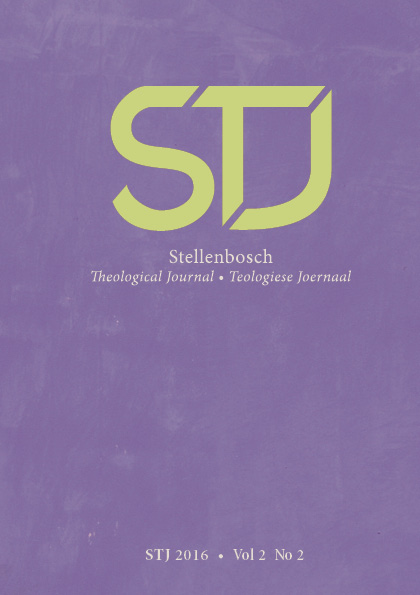Abstract
The Dutch Reformed Church and the Afrikaner – in its church orderThe Dutch Reformed Church (DRC) and the Afrikaner people had close ties in the 1960’s. This was intensified by the apartheid system in South Africa. The policy of apartheid was supported by the DRC, most of the Afrikaners and the National Party in government.
In 1962 the DRC determined in its church order that it will protect and build the Christian-Protestant character of the Afrikaner people. This group was singled out by a church that was to be for believers of all nations. It also gave the DRC an active part in the development of this group.
The documents Church and Society-1986 and Church and Society-1990 changed all this. The close links between the DRC and Afrikaans cultural institutions ended and the DRC declared that it caters to any believer. The church order article about the Afrikaner was omitted.

This work is licensed under a Creative Commons Attribution 4.0 International License.
Copyright (c) 2016 Piet Strauss

